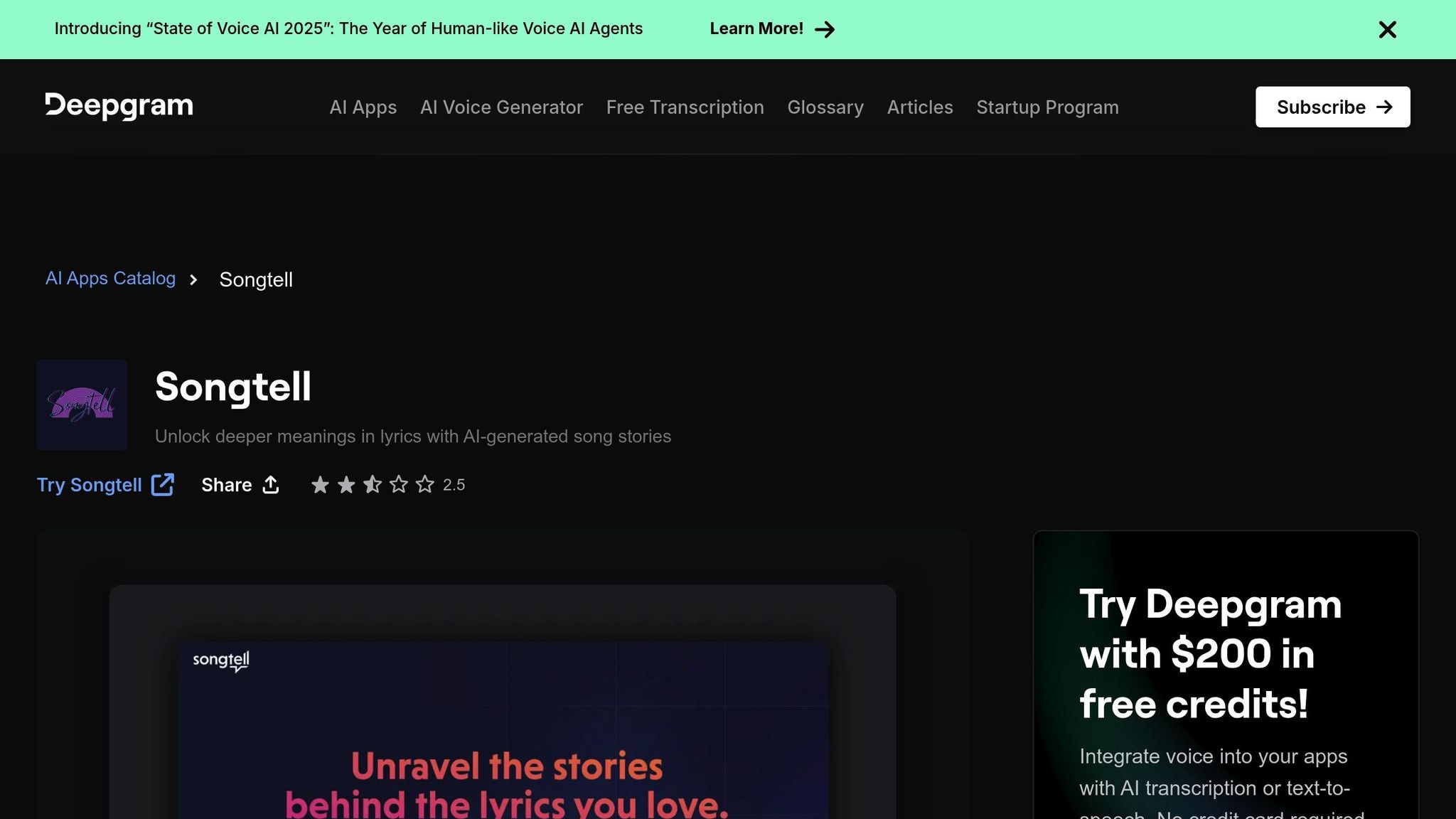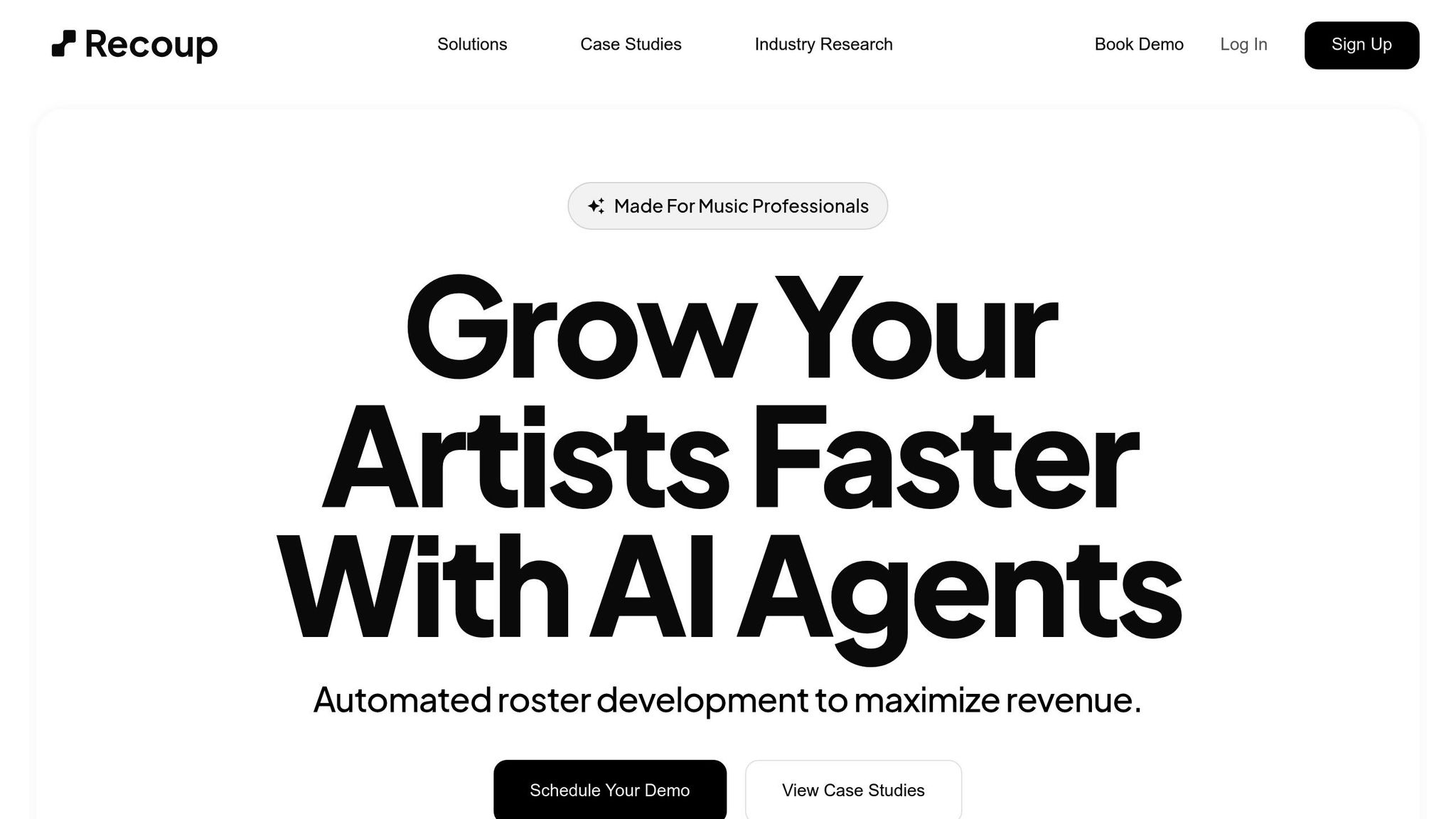How AI Analyzes Lyrics for Social Themes
Explore how AI analyzes music lyrics to uncover social themes, emotional tones, and cultural references, enhancing audience connection.

How AI Analyzes Lyrics for Social Themes
AI is transforming how we understand music lyrics by identifying social themes, cultural references, and emotional tones. It uses Natural Language Processing (NLP) to process large datasets, revealing patterns and trends that help music professionals connect with audiences and improve strategies. Here's a quick overview:
-
What AI Does:
- Detects social themes like activism, justice, or emotional tones.
- Analyzes over 110,000 data points per artist for deeper insights.
- Tracks cultural references and evolving trends in lyrics.
-
How It Works:
- Cleans lyrics (removes noise, normalizes text).
- Uses NLP for semantic analysis, sentiment classification, and pattern recognition.
- Matches lyrics with databases to classify social themes.
-
Benefits:
- Boosts marketing success rates (e.g., partnership success jumped from 5% to 35%).
- Helps music platforms recommend songs based on themes, not just style.
- Simplifies content screening for sensitive material.
-
Challenges:
- Struggles with subtle meanings, slang, and idioms.
- Requires human input for nuanced interpretation.
AI tools like Recoup are helping music professionals scale their operations, analyze trends, and connect with audiences more effectively. While AI has limitations, it’s a game-changer for understanding lyrics and their social impact.
How AI Processes Lyrics
Text Cleanup Steps
Before analyzing lyrics, AI systems clean up the text by removing unnecessary elements and organizing it for processing. Key steps include:
- Tokenization: Breaking lyrics into smaller units like words or phrases.
- Normalization: Converting text to lowercase and standardizing punctuation for consistency.
- Noise Removal: Stripping out irrelevant symbols or formatting issues.
Language Processing Methods
Natural Language Processing (NLP) plays a central role in analyzing lyrics, capturing both surface-level and deeper meanings. Here's how it works:
1. Semantic Analysis
AI studies the relationships between words and their context. This helps uncover metaphors, cultural references, and deeper themes hidden within the lyrics.
2. Sentiment Classification
Algorithms evaluate the emotional tone and intensity of the lyrics. This allows categorization based on emotional impact or commentary on societal issues.
3. Pattern Recognition
Machine learning models identify recurring phrases or structures that might indicate underlying social messages.
Theme Detection Process
To pinpoint and classify social themes in lyrics, AI uses a mix of techniques:
- Contextual Mapping: Examining word clusters and their relationships to understand context.
- Reference Matching: Comparing lyrics with databases of established social themes to find similarities.
- Pattern Analysis: Recognizing repeated phrases or motifs tied to specific social commentary.
For instance, when analyzing protest songs from the 1960s, AI can detect themes of activism and social justice by identifying patterns and contextual cues tied to that era. Each step builds on the previous one, creating a structured process that allows AI to delve deeper into thematic elements.
Discover Meaning Behind Songs with Songtell's AI-Powered ...

AI Methods for Theme Analysis
AI enhances its analysis by diving deeper into emotions, themes, and context within lyrics, offering a more detailed understanding of artistic expression.
Emotion Detection
Using advanced tools, AI evaluates the emotional tone in lyrics, processing over 110,000 data points per artist [1]. This helps uncover how different emotional tones resonate with audiences, offering insights into engagement and spotting trends.
Theme Grouping
AI algorithms cluster similar themes in lyrics, tracking changes over time. This reveals patterns in an artist's work and highlights shifts in creative focus or direction.
Context Understanding
AI goes beyond the words, analyzing cultural references and time-specific elements in lyrics. By doing so, it identifies superfans and tracks emerging trends tied to social themes, offering valuable insights for music industry strategies.
sbb-itb-3b2c3d7
Uses of AI Lyric Analysis
Music Classification
AI-powered lyric analysis is changing how streaming platforms organize and recommend music. Recoup's technology processes massive datasets to pick up on subtle social cues like political messages, social commentary, and cultural references [1]. This allows platforms to create playlists and recommendations based on themes and lyrical content, not just musical style. The result? A more personalized listening experience for users and better tools for music businesses to make informed decisions.
Industry and Research Applications
AI insights go beyond music recommendations - they’re helping record labels and researchers understand cultural trends. For instance, Recoup’s lyric analysis has been used by record labels to spot emerging themes and audience preferences. During an A Boogie campaign at Atlantic Records, the technology delivered a +1053% ROI and added $196,607 in email value [1]. Labels have found that these insights allow them to expand their artist rosters without needing larger teams [1].
Researchers also benefit from AI’s ability to analyze large volumes of lyrical data. This helps them track how cultural and social themes evolve over time, offering a deeper understanding of societal changes.
Content Screening
AI also simplifies content screening by identifying sensitive or controversial material automatically. This ensures that music platforms can handle large numbers of new releases while staying within platform guidelines. It’s an efficient way to manage potential content concerns without slowing down operations.
Limits of AI Lyric Analysis
Multiple Meanings
AI often struggles to grasp the subtle layers of meaning in song lyrics. This can lead to missing underlying social themes or less obvious interpretations, as natural language is often complex and open to multiple readings.
Language Differences
Dialects, slang, and idiomatic expressions add another layer of difficulty for AI when analyzing lyrics. Even with extensive data - such as analysis of over 110,000 points [1] - it’s tough for AI to fully understand the cultural depth and context across different languages. These challenges highlight areas where AI in music analysis still has room to grow.
Recoup's AI Music Tools

Lyric Analysis Features
Recoup's AI platform uses deep data analysis [1] to uncover social themes, audience reactions, and engagement trends, giving music professionals insights they can act on. With advanced natural language processing, the platform pinpoints trending topics and themes that connect with specific audience groups. Its real-time analytics dashboard lets users monitor how different lyrical themes perform across demographics, helping with artist development and marketing strategies. These insights also support other business tools aimed at improving overall operations.
Business Tools
Recoup extends its lyric analysis capabilities with a set of business tools focused on improving how music businesses operate. These tools simplify fan engagement and revenue strategies, delivering measurable outcomes.
"Finally, we can scale our roster without scaling our team. The data insights are incredible." - Lisa Rodriguez, Marketing Director, Forward Records [1]
Try Recoup Free
Get hands-on with Recoup's AI tools through a free trial, starting at $99/month per artist. Features include automated fan engagement, theme analysis, and revenue optimization, plus integrations with Spotify and Apple Music.
"Recoup's AI automated our entire artist development process. In 6 months, we saw massive growth across our roster." - Sarah Chen, Head of A&R, Indie Label Collective [1]
The platform's integration with major streaming services allows instant data collection and analysis, empowering music teams to make informed decisions about their artists' careers while focusing on social themes and audience connections.
Summary
AI-driven lyric analysis is changing how the music industry understands social themes and audience engagement. Using advanced natural language processing and large-scale data analysis, these tools can process extensive lyric datasets to reveal patterns that influence business strategies.
Recoup's AI tools, for example, analyze over 110,000 data points per artist[1], leading to measurable cost savings and impressive returns on investment (ROI). These results demonstrate how AI is reshaping operations and helping music businesses connect with their audiences more effectively.
Beyond the numbers, AI helps music professionals better identify and work with social themes. While traditional methods may lead to modest growth, AI has the potential to deliver ROI in the thousands of percent[1].
Although modern AI is excellent at analyzing complex language patterns, it still requires human input for interpreting subtle nuances. As these tools continue to improve, they will provide even more actionable insights, helping music professionals make smarter, data-focused decisions to strengthen the bond between artists and their audiences.